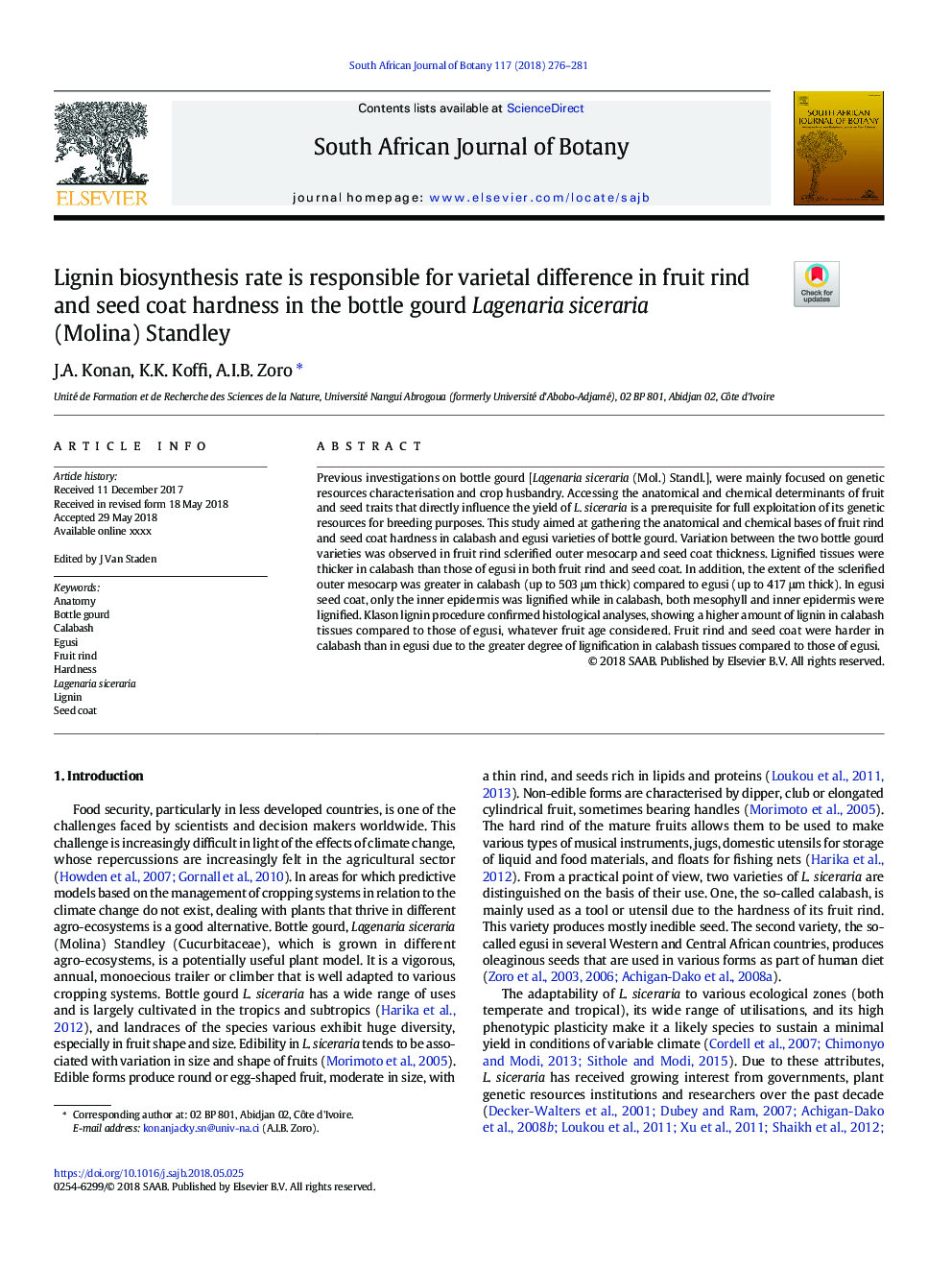| Article ID | Journal | Published Year | Pages | File Type |
|---|---|---|---|---|
| 8882295 | South African Journal of Botany | 2018 | 6 Pages |
Abstract
Previous investigations on bottle gourd [Lagenaria siceraria (Mol.) Standl.], were mainly focused on genetic resources characterisation and crop husbandry. Accessing the anatomical and chemical determinants of fruit and seed traits that directly influence the yield of L. siceraria is a prerequisite for full exploitation of its genetic resources for breeding purposes. This study aimed at gathering the anatomical and chemical bases of fruit rind and seed coat hardness in calabash and egusi varieties of bottle gourd. Variation between the two bottle gourd varieties was observed in fruit rind sclerified outer mesocarp and seed coat thickness. Lignified tissues were thicker in calabash than those of egusi in both fruit rind and seed coat. In addition, the extent of the sclerified outer mesocarp was greater in calabash (up to 503â¯Î¼m thick) compared to egusi (up to 417â¯Î¼m thick). In egusi seed coat, only the inner epidermis was lignified while in calabash, both mesophyll and inner epidermis were lignified. Klason lignin procedure confirmed histological analyses, showing a higher amount of lignin in calabash tissues compared to those of egusi, whatever fruit age considered. Fruit rind and seed coat were harder in calabash than in egusi due to the greater degree of lignification in calabash tissues compared to those of egusi.
Related Topics
Life Sciences
Agricultural and Biological Sciences
Agronomy and Crop Science
Authors
J.A. Konan, K.K. Koffi, A.I.B. Zoro,
